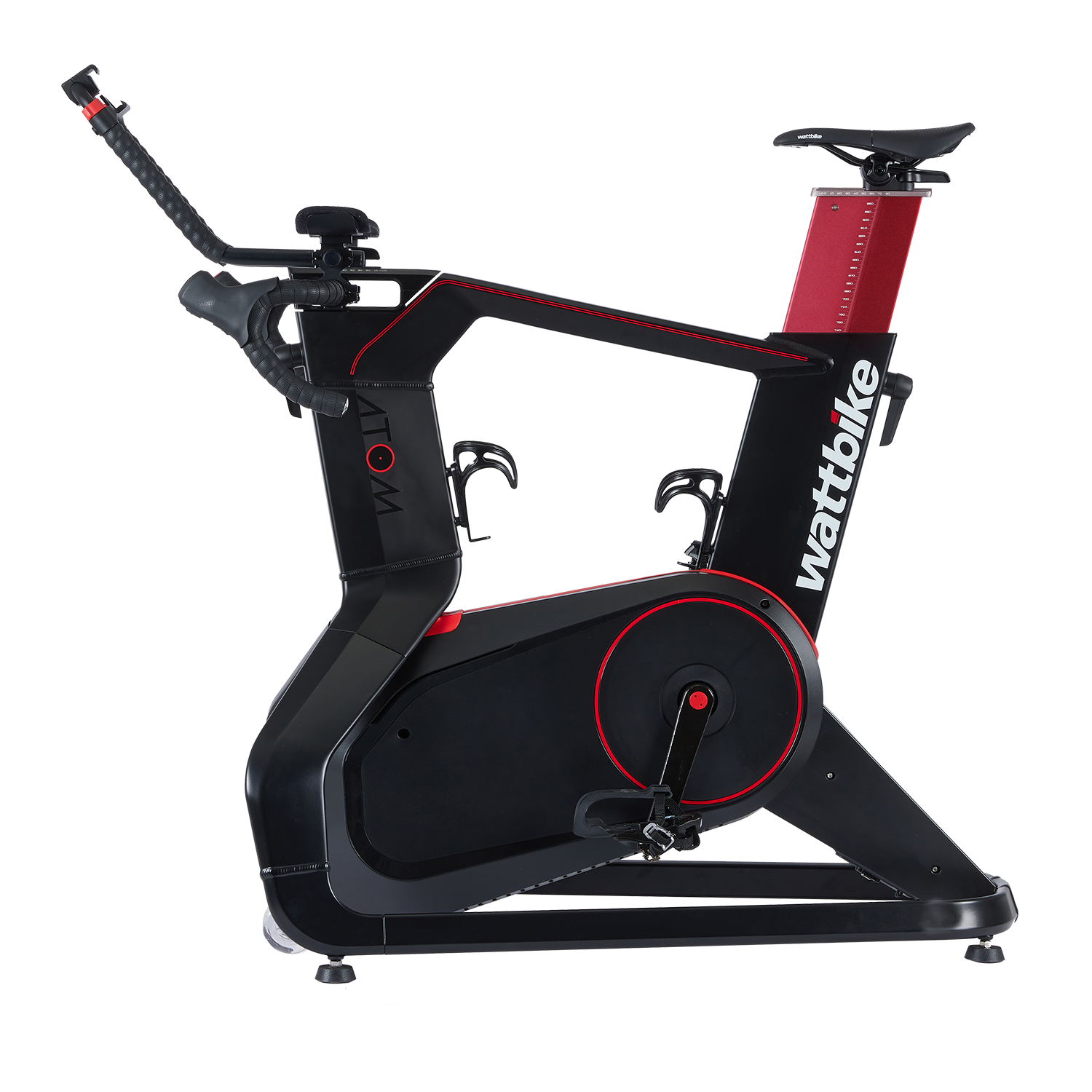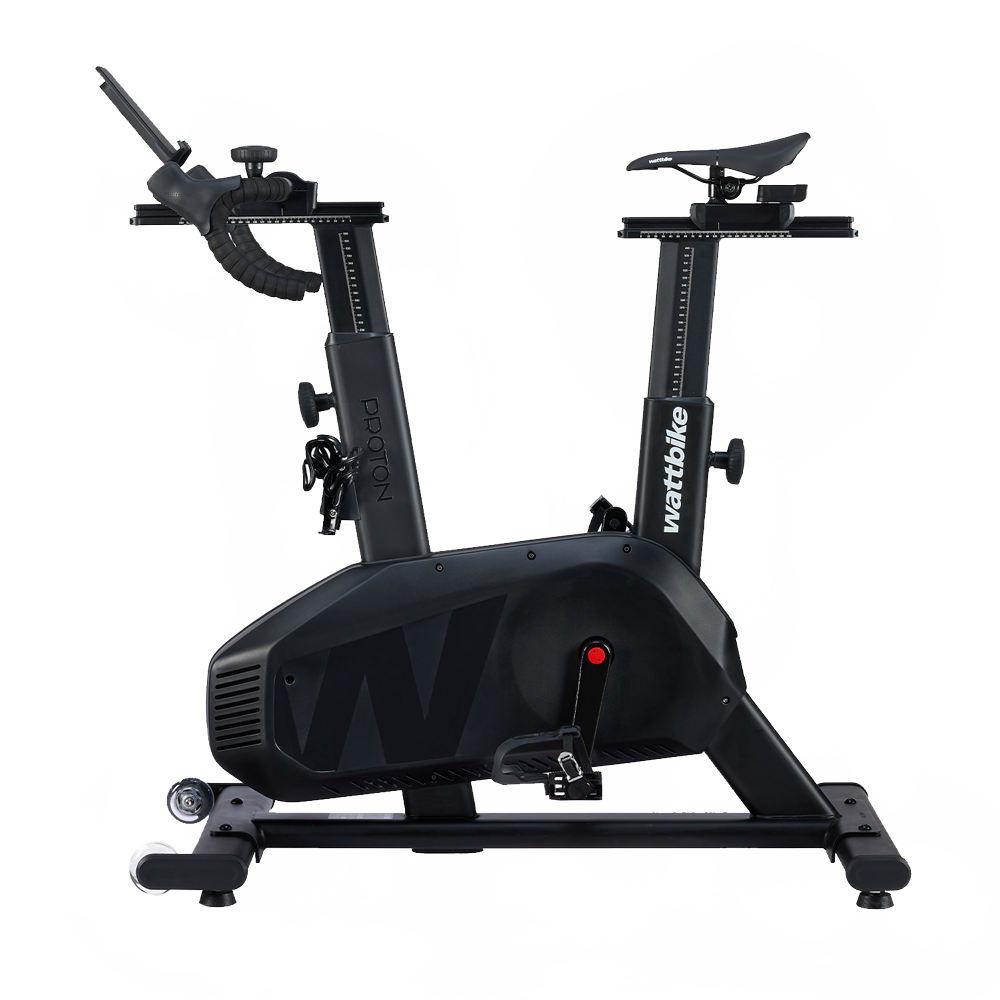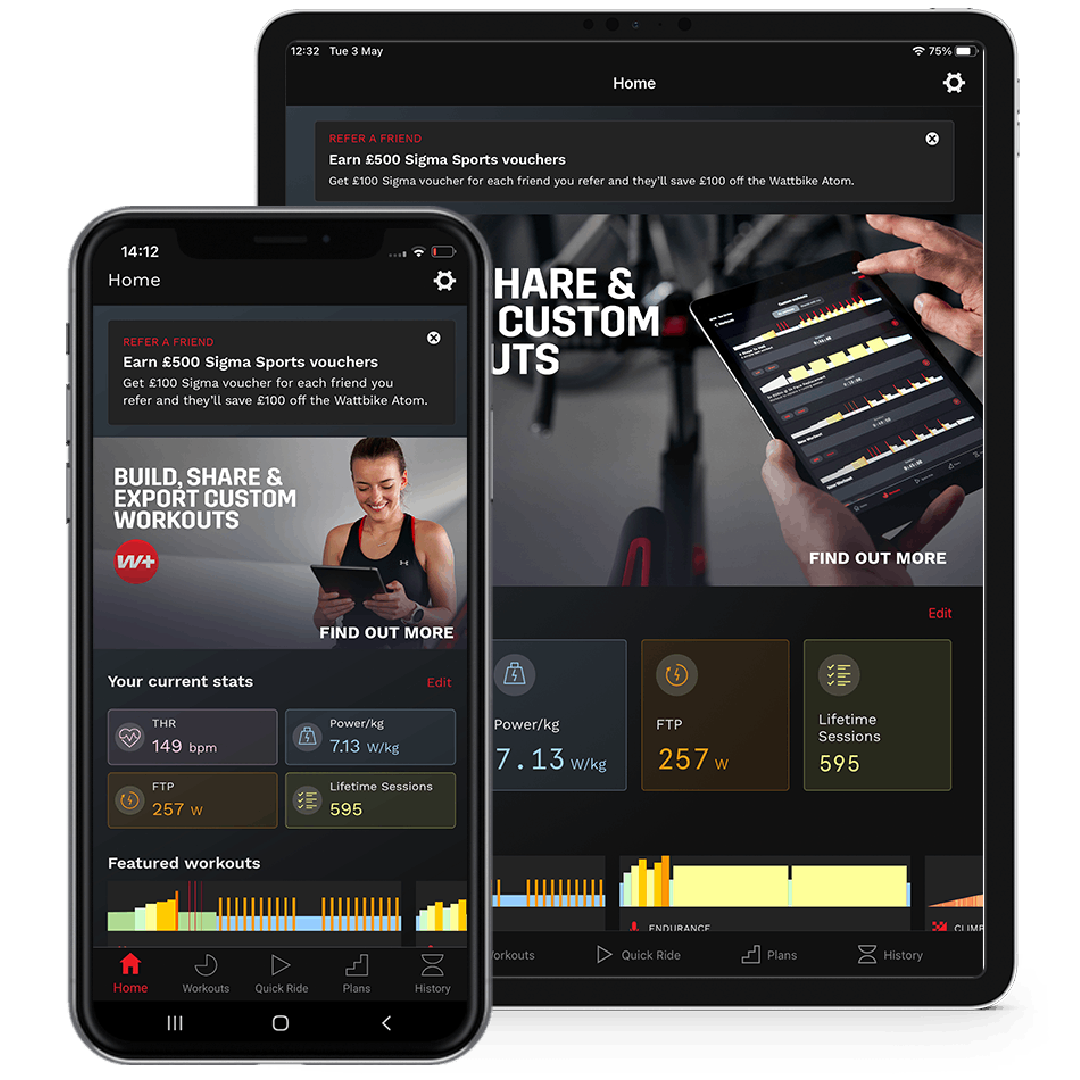Your Cart is Empty
SHOP
TRAINING & APPS
SUPPORT
news & information
Meet The British Designers Of The Wattbike Atom
March 07, 2018 4 min read
Designing a bike that adheres to the beauty rules of modern velo culture, yet will never roll on tarmac, or glide around corners, presents an inherent challenge. But it was one that London-based industrial design agency Curventa felt ready to take on.

The award-winning agency, founded by Adrian Bennett and Ian Murison, has a passion for, ‘delivering beautifully crafted, iconic, category defining products and experiences’. In real life, this describes a diverse portfolio from the world’s thinnest home-phone, a radical, full-face snowboarding helmet (later adopted by F1 pit drivers), to lust-worthy glass perfume bottles made for luxury, Italian fashion houses. And, whilst the Atom was Curventa’s first cycling project, it’s unlikely to be their last.
In the corner of the agency’s low-key, white-walled offices near London’s Tate Modern gallery is a pastel blue, life-sized model of the Atom. Unlike the real, 55kg bike, this virtual Atom can be lifted with one hand. It is a thing of beauty; slick and refined, as much a sculpture as it is a bike. But its relevance is obvious when you consider the attention the Atom’s design has received.
At its launch, it was called the ‘smartest bike on the planet’ but it has also been described as one of the best looking, dubbed ‘sleek’, ‘stylish’ and even ‘snatched’ by the cycling press and the public. So how did Curventa go about designing this unrivalled home trainer?

TELL US A LITTLE ABOUT YOUR APPROACH TO DESIGNING THE ATOM?
The Atom project was so exciting because we had a chance to make the fastest, coolest, bike without worrying about weight, or the any of the constraints that real bike designers must work with. However, fundamentally this is a bike and from the outset, we knew that it had to give a true, believable, bike experience. There had to be a clear delineation between the Atom and the aesthetic of aspin bike, orexercise bike.
One key aspect employed to make it bike-like was the use of a cross bar. Exercise bikes never have a cross bar because it makes them harder to get on and off. But for cyclists, it’s not an unfamiliar scenario. Moreover, it defines the Atom as a serious piece of cycling equipment. In some of our early scenarios we removed the cross bar but it became just another exercise bike.
WHO WAS THE ATOM AIMED AT?
The prevalence of cycling has changed so significantly and that is a new phenomenon. People are more discerning and more aware than ever before. Most cyclists with a spare thousand pounds would buy another bike, so we had to win them over with something special.
Wattbike is a British company and British design is inherently about honesty and showing how something should be used. That’s why certain things [on the Atom] are exposed and not hidden out of the way. We’ve been quite faithful about how things work – we’ve not hidden bolts or adjustment.

THE ATOM HAS AN AERO SEAT POST, WHY?
The Atom’s aero seat post is just one of the features that gives an illusion of speed. There’s obviously no functional, aero advantage - it’s a static bike - but it sends a message that says high-performance bicycle. You would never see a two-inch steel rod [as used on many exercise bikes] on a real bike, so why use one on the Atom?
It also allowed us to mimic the fore-aft saddle adjustment that you get on a real bike. This ability to personalise the set-up is important for a performance training tool and as soon as you go with this dynamic, it says that this is a serious piece of cycling equipment.
HOW IMPORTANT WAS IT THE ATOM WAS A FULLY CONNECTED, SMART BIKE?
Wattbike had tasked us with designing a bike that was a connected, complete offering. One of the things we unearthed in our research was the increasing importance of the Zwift environment and gamifying your winter training.
The shifters on the Atom are a leap forward for any bike trainer but they are what set the Atom apart – they’re the bridge between this digital, on-line experience and this familiar, bike riding scenario. Getting the shifters in the right position and ensuring that they felt right like real hoods was fundamental to creating this immersive experience.

WHAT BARRIERS DID YOU HAVE TO OVERCOME?
If you consider a real bike, there are aspects that make the Atom implausible. The front forks are clearly not functional however, the way that they spread out and wrap bottom of the frame gives the illusion of something bike-like.
The main box (where the chain rings and step motor is housed) is the most alien part. Raising the box off the floor - to look as if it is levitating - gives the idea that the bike is moving; for us it was important to create something that looks as if it’s moving, even though it never really will.
Also in Product guides

Wattbike vs The Rest: The Most Accurate and Reliable Indoor Training Bike on the Market
October 22, 2025 3 min read
Looking for the most accurate indoor training bike on the market? Independent research and global testing shows thatWattbike leads the way. Validated in peer-reviewed evidence based sports science studies and named Best Overall Smart Bike 2025 by Cycling Weekly, Wattbike delivers lab-grade power accuracy, elite-level reliability, and a ride feel that outperforms every competitor. From home riders to elite sports teams, Wattbike is thesmart bike trusted by science, coaches, and champions alike.

Smart Bike VS Air Bike: Which Wattbike is right for your training goals?
August 26, 2025 3 min read
When it comes to indoor cycling, one size doesn’t fit all. Wattbike offers a performance-driven range of bikes. The Atom, Proton, and Air - each with distinct capabilities that align with different training needs and user types.
Whether you're a virtual racing enthusiast, endurance rider, HIIT fanatic, or part of a multi-user fitness household, we want to make sure you’re getting the most out of your Wattbike.
In this blog, we’ll break down the differences between Smart Bikes (Atom & Proton) and our Air Bike (Wattbike Air) and help you match your training goals to the right bike.

Exercise Bike & Indoor Trainer Maintenance Tips for Indoor Cycling
March 11, 2025 5 min read
Read MoreSign up to get the latest
Be the first to hear about Wattbike news, offers and more.








